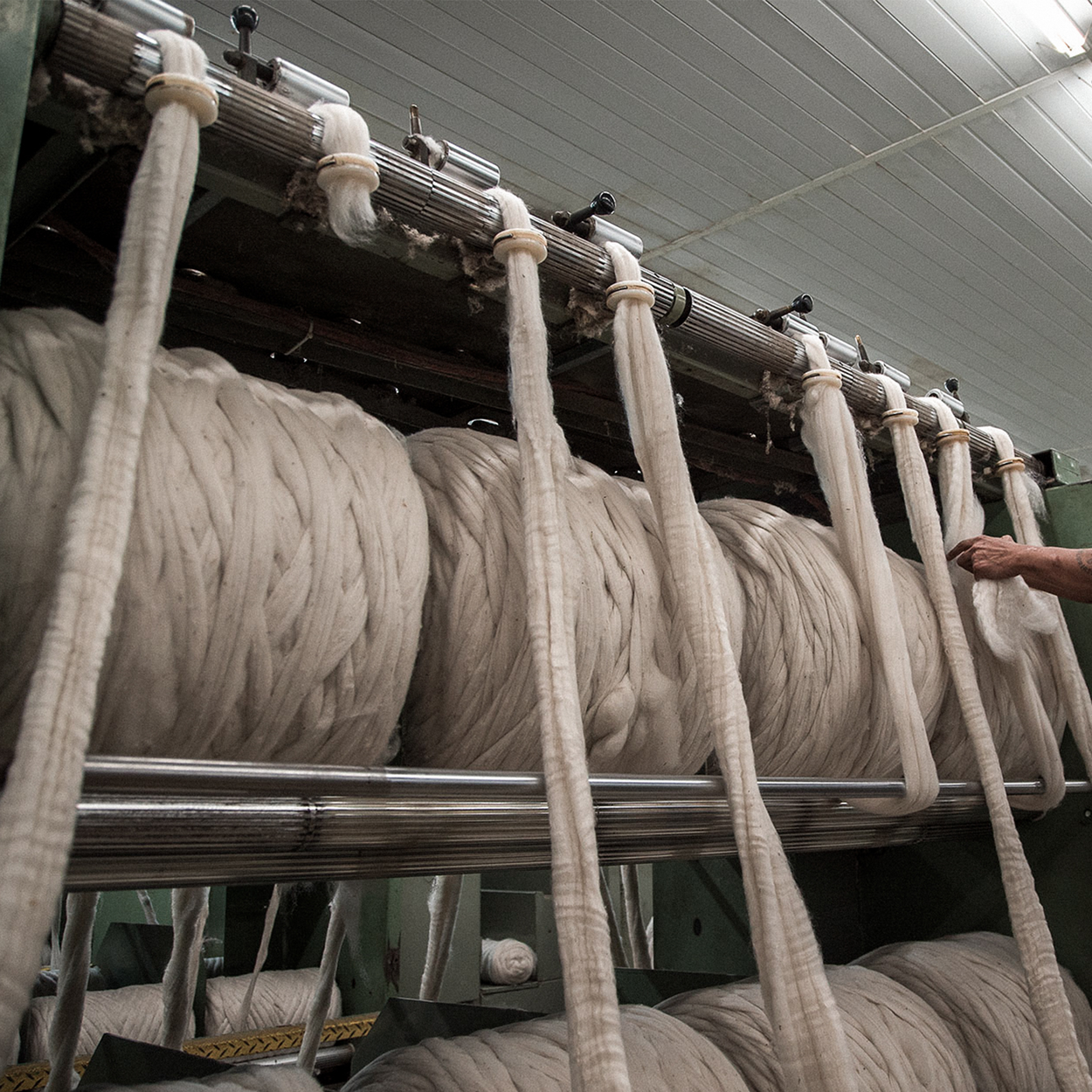From Sheep To Sweater
Since fall 2019, all our merino wool essentials are 100% traceable, from our Argentinian farms all the way to your doorstep. Unraveling our merino wool supply chain allows us to to trace our actions, uncover their impact and relay back to you the raw story of what it takes to create our garments.
Head down to follow the journey: From sheep to sweater.

The Merino Farms
CHUBUT & SANTA CRUZ, ARGENTINA
Our four Argentinian farms are located in some of the most spectacular locations on our planet, including Patagonia in the Santa Cruz Province and the Valdés Peninsula in the Chubut Province of Argentina. Here, the sheep graze freely side-by-side with wildlife. The farms are family owned and have often been in the family for three to four generations. All farms are Nativa™ and RWS certified, ensuring the utmost care to both animal welfare, land management and biodiversity. The Argentinian climate offers scorching hot summers and freezing cold winters, the perfect breeding and living grounds for Merino sheep, allowing them to develop moisture wicking, temperature regulating extra fine wool.

Scouring & Combing
TRELEW, ARGENTINA
The raw (also called greasy) wool is shipped to our state of the art processing facility in Trelew, Argentina to be cleaned and combed. Founded in 1985 by our sourcing partner Chargeur, the facility specializes scouring (the technical term for cleaning) and combing, handling millions of kilograms of wool per year. To remove sand, dirt and dried sweat (suint), the wool is scoured in a series of alkaline baths which contain water, soap, and soda ash. Once the wool is clean, it's combed — a mechanical process that disentangles the fiber and places them in fluffy lines parallel to each other.

Spinning
ŁÓDŹ, POLAND
Next up is our Merino Wool Spinning Mill - a modern facility based in Łódź, Poland, an area known for its expertise in wool material processing and knitwear. Here the wool, still fluffy and thick, has to undergo the delicate process of being spun into a long continuous thread. The facility is equipped with high-tech and energy efficient spinning machinery, which stretch, spin and twist the fiber into a strong, luxurious yarn. The carefully calibrated process sees 1kg of wool spun into 30km of yarn. The yarn is then wrapped onto commercial cones and packed ready for the next step in the chain.

Dyeing
BIELLA, ITALY
The spun yarn is then transported to our dyeing facility just North of Milan, located in a series of turn-of-the-century heritage buildings. With over 100 years of experience, our dyeing house has mastered the art dyeing, hitting the mark on colour uniformity, depth and fastness. Dyeing is both energy, compound and water intensive, so the mill makes considerable efforts to reduce its impact. The facility is powered by renewable energy with a combination of photovoltaic solar panels and hydroelectric power. Also on-site is a water cleaning facility, large enough to clean wastewater from the facility as well as civil wastewater back to grade A drink water.

Knitting
BĂILEȘTI, ROMANIA
Richly dyed cones then arrive at our knitters in Romania. Our sweaters are knitted “fully fashioned”, meaning that each panel (each part of the sweater - sleeves, chest, back) is knitted to its exact dimensions (as opposed to knitting fabric roles and cutting out the panels). It’s a more expensive technique, but it results in zero fabric waste and a flatter seams for a nicer finish. The dyed cones are placed on flatbed knitting machines, where hundreds of needles work to knit together the individual panels — four for all sweaters, except the Roll Neck that needs a fifth for the neck.

Linking
BĂILEȘTI, ROMANIA
Finally, the panels are linked and finished. When linking, the connecting edges of each panel are placed on a linking machine, where every single loop is hooked to a needle - by hand. Then, in a semi-automatic manoeuvre, the machine links the parts together. The garments then undergo a washing program which softens the handfeel as well as sets and shrinks the garment to its correct proportions.
Finally, manual quality checks are performed by independent controllers and the ASKET team before the lot is shipped to our German warehouse.